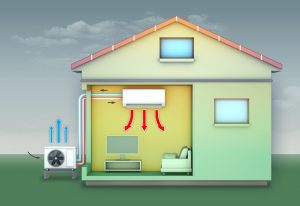The HVAC industry is undergoing a significant transition as refrigerants are being phased out in favor of more environmentally friendly alternatives. The latest shift centers on the phase-out of R-410A refrigerant, following the earlier phase-out of Freon (R-22). These changes are part of global efforts to reduce greenhouse gas emissions and limit ozone layer depletion.
You can always trust our team for up-to-date information and quick HVAC repairs in New Orleans when they’re needed.
The Phase-Out of Freon (R-22)
Freon, also known as R-22, was a widely used refrigerant for decades in air conditioning and refrigeration systems. However, it was found to be a major contributor to ozone layer depletion due to its high ozone depletion potential (ODP). As part of the Montreal Protocol, an international treaty aimed at protecting the ozone layer, the production and import of R-22 were gradually reduced, leading to a complete phase-out in the United States by January 1, 2020.
The transition away from R-22 created challenges for homeowners and businesses with older HVAC systems. As R-22 became scarce and expensive, many opted to replace their systems with those compatible with R-410A, a refrigerant that, while still a hydrofluorocarbon (HFC), had no ozone depletion potential and was considered a more sustainable option at the time.
The Current R-410A Phase-Out
While R-410A does not harm the ozone layer, it has a high global warming potential (GWP), making it a target for reduction under climate change initiatives. The Kigali Amendment to the Montreal Protocol aims to reduce the use of HFCs like R-410A, promoting a shift to refrigerants with lower GWP values.
In the United States, the EPA has set guidelines to reduce the use of HFCs, including R-410A. As a result, manufacturers are transitioning to alternative refrigerants that meet regulatory requirements while maintaining efficiency and performance.
Emerging Alternatives: R-454B and R-32
Among the new refrigerants gaining traction are R-454B and R-32, both of which offer lower GWP values and improved energy efficiency compared to R-410A.
R-454B
R-454B, marketed under the trade name Puron Advance, is a blend of two refrigerants. It has a GWP of around 466, significantly lower than R-410A’s GWP of 2,088. R-454B is designed to be a near drop-in replacement for R-410A, making it easier for manufacturers to adapt their equipment. It offers comparable cooling capacity and energy efficiency while aligning with environmental goals.
R-32
R-32 is another promising alternative with a GWP of 675. Unlike R-454B, R-32 is a single-component refrigerant, making it easier to recycle and handle. It also has superior heat transfer properties, allowing HVAC systems to use less refrigerant while achieving the same performance. This contributes to improved system efficiency and reduced environmental impact—one of several energy-saving upgrades worth considering.
Why These Refrigerants?
Both R-454B and R-32 are considered more environmentally friendly than R-410A. They strike a balance between regulatory compliance, performance, and safety. While they are mildly flammable, advances in technology and safety protocols have made their adoption feasible. Manufacturers and technicians are receiving training to handle these refrigerants safely.

